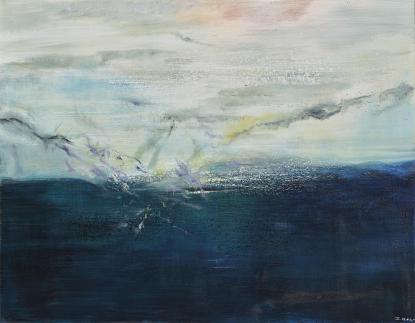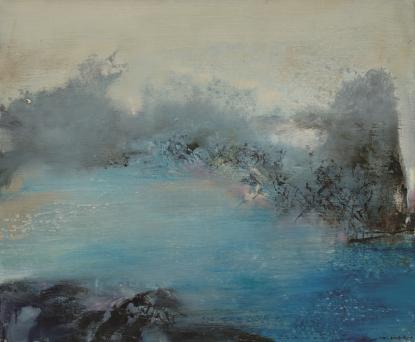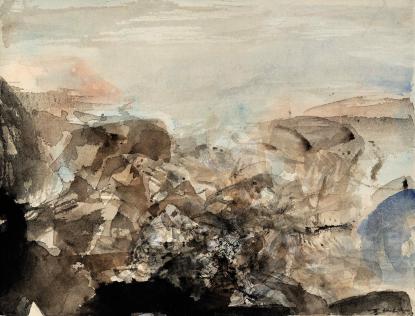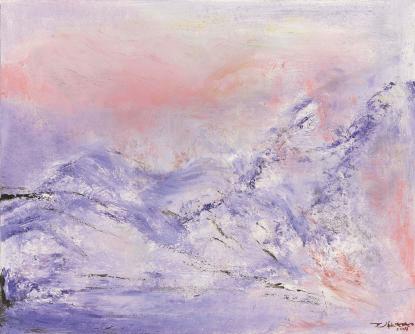Zao Wou-Ki
Zao Wou-Ki was born in Beijing, China in 1920. He studied calligraphy and painting at the School of Fine Arts in Hangzhou. He moved to Paris in 1948 where he lived most of his life. He died in Nyon, Switzerland in 2013.
Zao Wou-Ki was lauded throughout his career for his ability to unite multiple artistic traditions within a single work, marrying Eastern and Western approaches to art-making through his abstract compositions that retained hints of his training as a landscape painter. When Zao arrived in France, associated with the Ecole de Paris, he began to paint boldly, combining expressive lines with deeply saturated color. In the mid-1950s, he incorporated Chinese influences more directly, sometimes using actual calligraphy instead of loose and winding brushstrokes. During this period, Zao frequently travelled to New York, where he met Abstract Expressionists. Later in the 1970s, Zao's paintings become less focused on line and gesture, striving instead toward an ambient and dreamlike atmosphere in which foreground and background are entirely blurred. Taken in its entirety, Zao's oeuvre reflects a continual struggle—the artist's gesture versus the painter's canvas.
Zao's paintings are part of the permanent collections of leading international museums including the Art Institute of Chicago, Chicago; The Museum of Modern Art, New York; The Solomon R. Guggenheim Museum, New York; The San Francisco Museum of Modern Art; the Musée National d'Art Moderne, Centre Georges Pompidou, Paris; The Tate Gallery London; the Musée Royal des Beaux-Arts, Brussels; the National Institute of Fine Arts, Beijing; the Hong Kong Museum of Art; the Kaohsiung Fine Arts Museum, Taiwan; The Museum of Tel Aviv; the Galleria d'Arte Moderna, Milan; the Fukuoka Art Museum, Fukuoka; and the National Museum of Art, Osaka amongst others.

SELECTED WORKS

Zao Wou-Ki, 18.06.2001, 2001
Oil on canvas
114 x 146 cm | 44.9 x 57.5 in

Zao Wou-Ki, 19.06.85, 1985
Oil on canvas
54 x 65 cm | 21.3 x 25.6 in

Zao Wou-Ki, Untitled, 1973
Watercolor on paper
25 x 32,5 cm | 9.8 x 12.8 in

Zao Wou-Ki, 02.05.2004, 2004
Oil on canvas
65,5 x 81,3 cm | 25.8 x 32 in

Zao Wou-Ki, 12.12.68, 1968
Oil on canvas
95 x 105 cm | 37.4 x 41.3 in

Zao Wou-Ki, 18.12.69, 1969
Oil on canvas
116 x 89 cm | 45.7 x 35 in

Zao Wou-Ki, 19.08.2006, 2006
Oil on canvas
195 x 130 cm | 76.8 x 51.2 in